
The Arrivas House is located at 46 St. George Street, St. Augustine, Florida. It was the first completed restoration project of the Historic St. Augustine Preservation Board (HSAPB), and was named after early owner Don Raimundo de Arrivas.

The Arrivas House is located at 46 St. George Street, St. Augustine, Florida. It was the first completed restoration project of the Historic St. Augustine Preservation Board (HSAPB), and was named after early owner Don Raimundo de Arrivas.
It is believed that the first building on this property dates back as early as 1650–1680, and was built of ripio, a shell concrete mixture. The original structure was replaced around 1725 with a building made of coquina. Don Raimundo de Arrivas is listed as the owner of the property on a 1764 map, which was created as an inventory of buildings that the Spanish compiled for the British when Florida became a colony of Great Britain.
During the British Period, the property was placed in the charge of a British agent, Jesse Fish. The property later reverted to the Arrivas heirs when Florida was regained by Spain in 1783. A 1788 map shows that the building had evolved into a large L-shaped masonry house, very similar to the structure that stands today. From 1824 until 1960 ownership changed over 20 times, with several architectural changes made, including the addition of a second story and balconies. [1]
Paul Arnau, St. Augustine Collector of Customs and Superintendent of Lighthouses, was another notable resident of the Arrivas House. While St. Augustine was under Confederate control, he oversaw the darkening of the St. Augustine Lighthouse and removed its lighting apparatus. In November 1861, Arnau was elected mayor, a post he resigned when the Union took control of the town. He was imprisoned until lighting mechanisms, which he had stored in his home, were returned to the Union Navy. [2]

The Historic St. Augustine Preservation Board purchased the Arrivas House in July 1960 for $49,900, and set out to restore the structure to its Second Spanish Period appearance. [3] It was the first restoration project they undertook in preparation for St. Augustine's 400th Anniversary celebration in 1965. Work began on the home in January 1961, and was formally dedicated on March 11, 1963. Then-Vice President Lyndon B. Johnson visited St. Augustine to mark the occasion, and gave a speech to the city from the Arrivas House balcony. [4] During Johnson's visit, Senator George Smathers formally invited the Spanish government, represented by Spanish Ambassador Antonio Garrigues, to participate in St. Augustine's 400th anniversary celebrations. [5]
The Arrivas House served as an interpreted historic site run by the Historic St. Augustine Preservation Board, where costumed docents demonstrated typical activities of Spanish colonial women. This included spinning, weaving, and candle making. In 1968, the Preservation Board acquired a loom that dated back to 1792 in Ohio. It was a gift from Van E. Marker of Tangerine, Florida. The loom was made of oak, maple, and black walnut and weighed almost 1,800 pounds. The Board put it to use at the Arrivas House. [6] The second story briefly served as administrative offices for the Preservation Board.
The Arrivas House was documented as part of the Historic American Buildings Survey in 1960. Complete documentation is available on the Library of Congress's online catalog. [7]
Today, the Arrivas House is a commercial retail space, owned by the State of Florida and managed by University of Florida Historic St. Augustine, Inc. It is operated by The Panama Hat Company. [8]

The St. Augustine Light Station is a privately maintained aid to navigation and an active, working lighthouse in St. Augustine, Florida. The current lighthouse stands at the north end of Anastasia Island and was built between 1871 and 1874. The tower is the second lighthouse tower in St. Augustine, the first being lit officially by the American territorial government in May 1824 as Florida's first lighthouse. However, both the Spanish and the British governments operated a major aid to navigation here including a series of wooden watch towers and beacons dating from 1565.

Ximenez-Fatio House Museum is one of the best-preserved and most authentic Second Spanish Period (1783-1821) residential buildings in St. Augustine, Florida. In 1973, it was added to the National Register of Historic Places. It was designated a Florida Heritage Landmark in 2012.

The Spanish Military Hospital Museum is located at 3 Aviles Street, St. Augustine, Florida. The museum covers the Second Spanish Period (1784-1821) medical practices. The museum is open seven days a week from 9am to 5pm. Tours start on demand throughout the day and cover a surgical demonstration, apothecary demonstration, and tours of a medicinal herb garden.
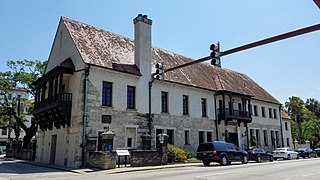
Government House, also known as Governor's House, is located at 48 King Street in St. Augustine, Florida, adjacent to the Plaza de la Constitución. The building, constructed of coquina, served as the governor's official residence from c. 1710 during the First Spanish Period (1565–1763), throughout the British Period (1763–1784), and until 1812 in the Second Spanish Period (1784–1821). Governor Gonzalo Méndez de Canzo was the first governor to build his residence on the present Government House site in 1598.

The Oliveros House is located at 59 St. George Street, St. Augustine, Florida. It was built of coquina during the Second Spanish Period in Florida (1565-1763). Today it is a reconstructed building, standing on original foundations which were unearthed during archaeological excavations.
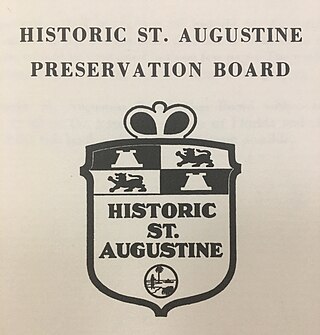
The Historic St. Augustine Preservation Board (HSAPB) was a state agency in Florida that participated in the restoration and preservation of historic buildings in St. Augustine, Florida from 1959 to 1997. Created in 1959 by Governor LeRoy Collins, the agency acquired, restored, and preserved historic structures in St. Augustine until its abolishment by the State of Florida in June 1997.
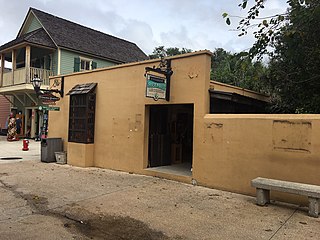
The Gallegos House is located at 21 St. George Street in St. Augustine, Florida. It is a reconstructed property demonstrating a typical home of Florida's First Spanish Period (1565-1764).

The Old Blacksmith Shop is located at 26 Charlotte Street in St. Augustine, Florida. It is a reconstruction of an outbuilding located on the site during the British possession of Florida.

The Gonzáles House and the De Hita Houses are located at 33 and 35 St. George Street, St. Augustine, Florida. Both houses are reconstructions of First Spanish Period (1565-1763) homes built on their original foundations.

The Triay House is a historic property located at 31 St. George Street in St. Augustine, Florida. It is a reconstruction of the First Spanish Period structure that stood on the site.

The Sánchez de Ortigosa House is located at 60 St. George Street, St. Augustine, Florida. It is a reconstruction of a home dating from the First Spanish Period (1565-1763) that stood on this site.

The Cerveau House is located at 26 Cuna Street in St. Augustine, Florida. It is an original house, constructed in the 19th century.
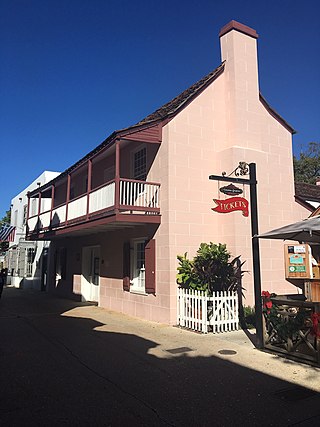
The De Mesa-Sánchez House is located at 23 St. George Street in St. Augustine, Florida. It is a restoration of a home dating back to East Florida's First Spanish Period.

The Ortega House is located at 70 St. George Street in St. Augustine, Florida. It is a reconstructed home representing the architectural style of the First Spanish Period (1565-1763) in Florida.
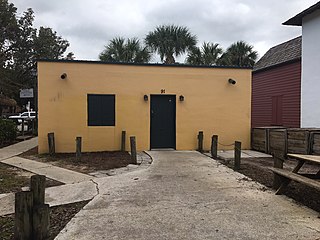
The Santoyo House is located at 91 St. George Street, St. Augustine, Florida. It is a reconstruction of a First Spanish Period (1565-1763) house in Florida.

The Joaneda House is located at 57 Treasury Street in St. Augustine, Florida. It was restored to be an example of a Second Spanish Period (1784-1821) residence. It is one of the oldest buildings in Florida.
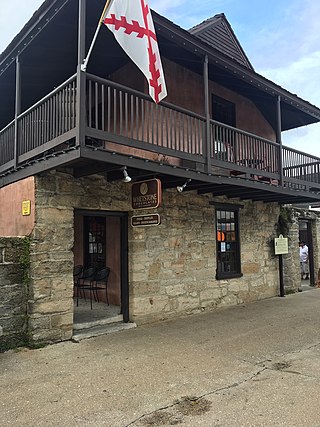
The Salcedo House and Kitchen are located at 42 and 42 1/2 St. George Street, in St. Augustine, Florida. They are reconstructions of 18th century structures that stood on these sites in St. Augustine's First Spanish Period (1565–1763).

The Pellicer-De Burgo House is located at 53 St. George Street in St. Augustine, Florida. It is a reconstruction of two connected houses built during the British Period (1763-1783) of East Florida.
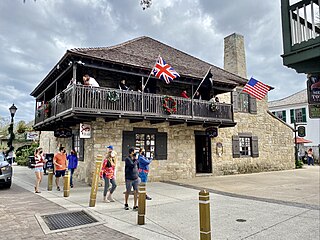
The Casa del Hidalgo is located at 35 Hypolita Street, at the southeast intersection of Hypolita and St. George Streets in downtown St. Augustine, Florida. It was constructed in 1965 and housed the Spanish government's official exhibition and cultural center.

The Paredes-Dodge House is located at 54 St. George Street in St. Augustine, Florida. The one and a half story structure was built between 1803 and 1813, and is one of the only surviving colonial structures in St. Augustine.